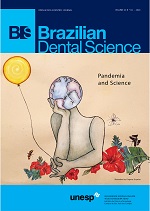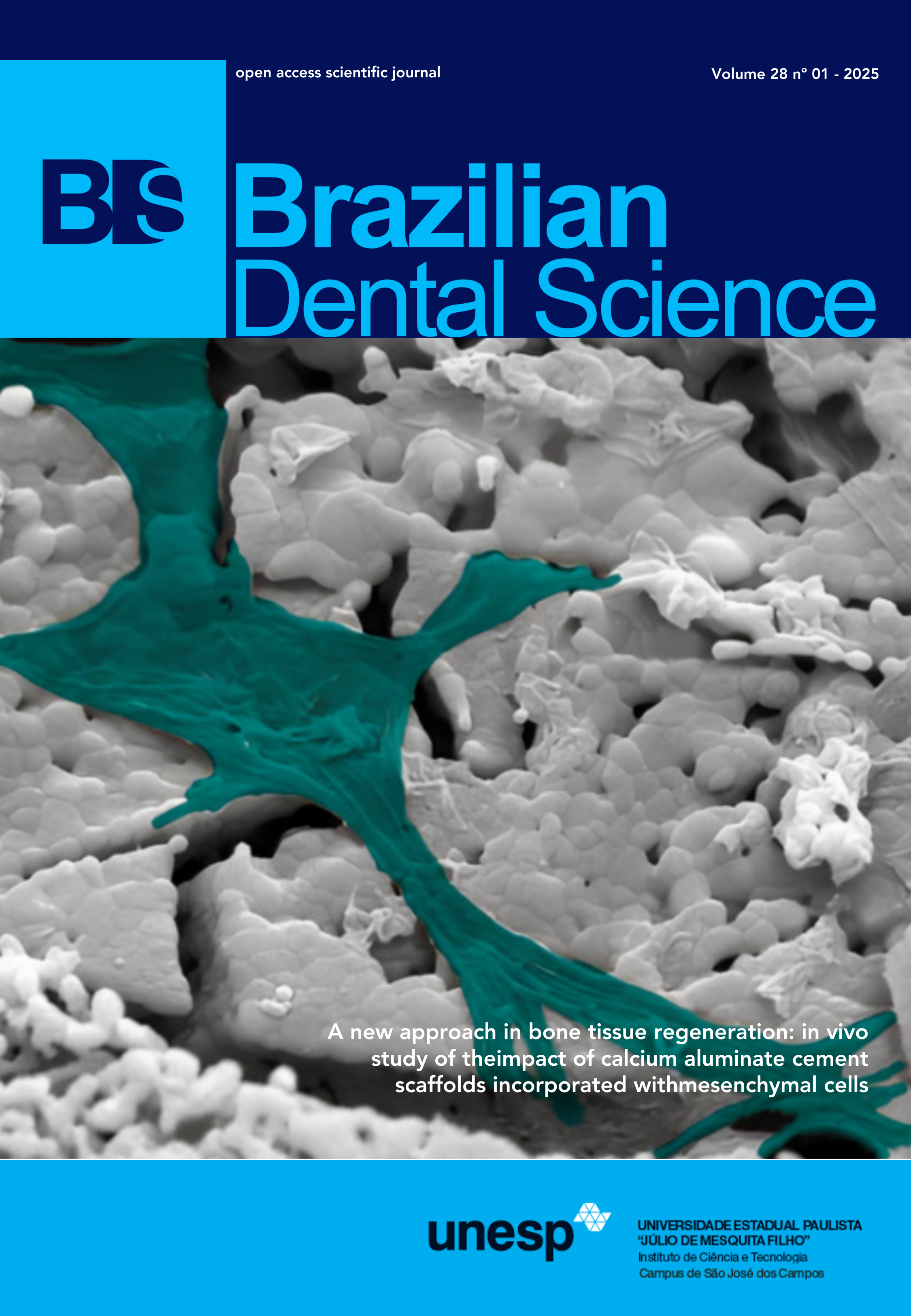Effect of topical Insulin administration on bone defect healing in diabetic rats
DOI:
https://doi.org/10.14295/bds.2020.v23i2.1914Abstract
Objective: insulin has been reported to possess anabolic effect on bone. Topical application of insulin in bone defects in diabetic rats has not been investigated. The objective of this study was to evaluate histologically the effect of topical administration of insulin for the restoration of tibial bone defects in diabetic rats. Materials and Methods: Sixteen adult male albino diabetic rats were grouped into two equal groups, group I (diabetic control) which had not received any graft, group II (experimental) which was diabetic and had received topical insulin loaded on PVP (Polyvinylpyrrolidone). Specimens were harvested on days seven and twenty eight days after surgical procedures, prepared and examined histologically by H&E (haematoxylin and eosin) stain, there were wide histological differences between the groups of this study along the different intervals of the study.Results:The histological results demonstrated that there was obvious retardation in resolving the inflammatory phase, organization of the blood clot and bone formation in the diabetic control group I than the experimental group II along the different intervals of this study. Moreover, there was great acceleration in granulation tissue formation, organization and bone formation in experimental group II which received the insulin PVP. Discussion: The enhancement in bone healing process was due to the effect of insulin which accelerates the bone regeneration by means of inflammation resolve, angiogenesis, proliferation and successive differentiation of mesenchymal cells. Conclusion: Topical applications of insulin in bone defects enhance new bone formation in diabetic rats.
KEYWORDS
Insulin; Bone defect; Tibia; Diabetes; Rats.
Downloads
Published
Issue
Section
License
COPYRIGHT TRANSFER AND RESPONSIBILITY STATEMENT
(PDF)
For all articles published in the BDS journal, copyright is retained by the authors. Articles are licensed under an open-access Creative Commons CC BY 4.0 license, meaning that anyone may download and read the paper for free. In addition, the article may be reused and quoted, provided that the original published version is cited. These conditions allow for maximum use and exposure of the work while ensuring that the authors receive proper credit. All metadata associated with published articles is released under the Creative Commons CC0 Universal Public Domain Dedication.
Before the submission, authors must obtain permission to reproduce any published material (figures, schemes, tables, or any extract of a text) that does not fall into the public domain or for which they do not hold the copyright. Permission should be requested by the authors from the copyright holder (usually the Publisher, please refer to the imprint of the individual publications to identify the copyright holder).
The authors hereby attest that the study is original and does not present manipulated data, fraud, or plagiarism. All names listed made a significant scientific contribution to the study, are aware of the presented data, and agree with the final version of the manuscript. They assume complete responsibility for the ethical aspects of the study.
This text must be printed and signed by all authors. The scanned version should be submitted as supplemental file during the submission process.



